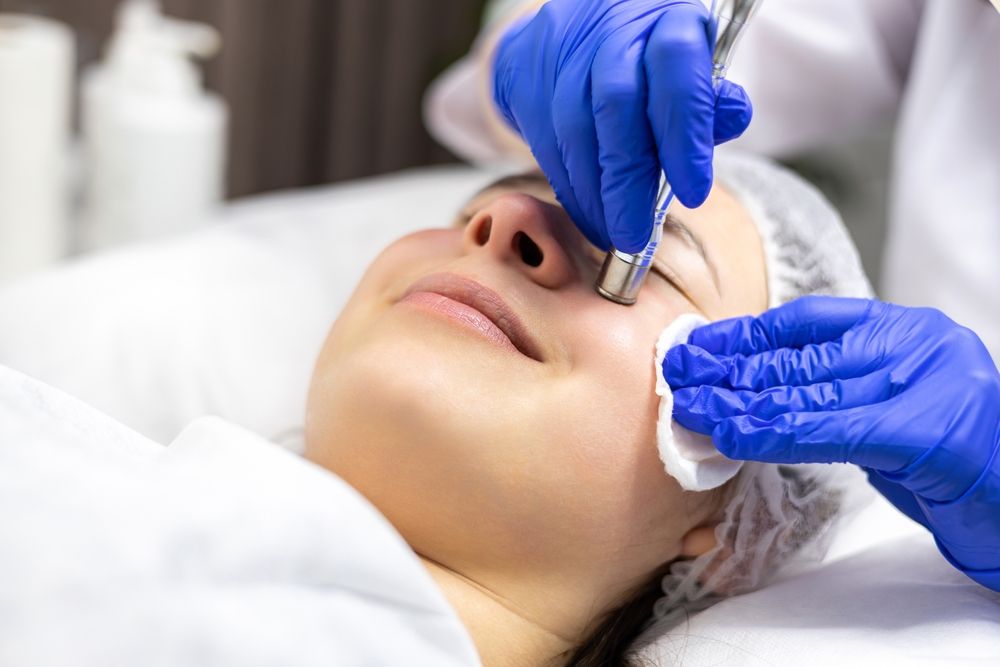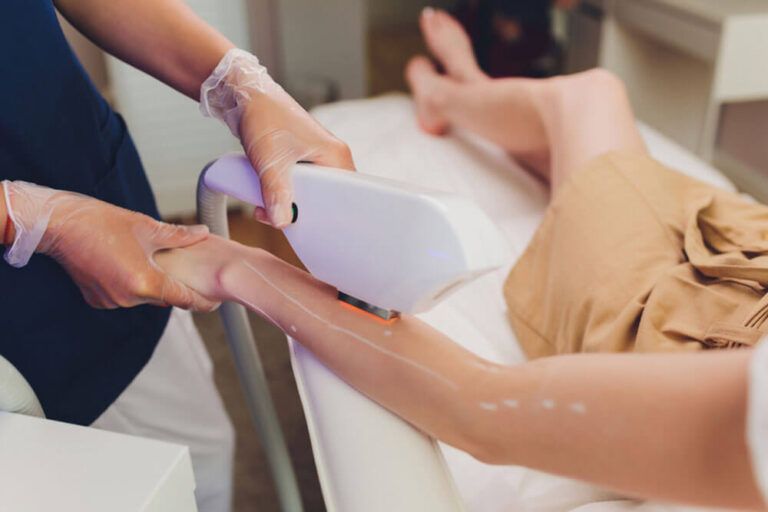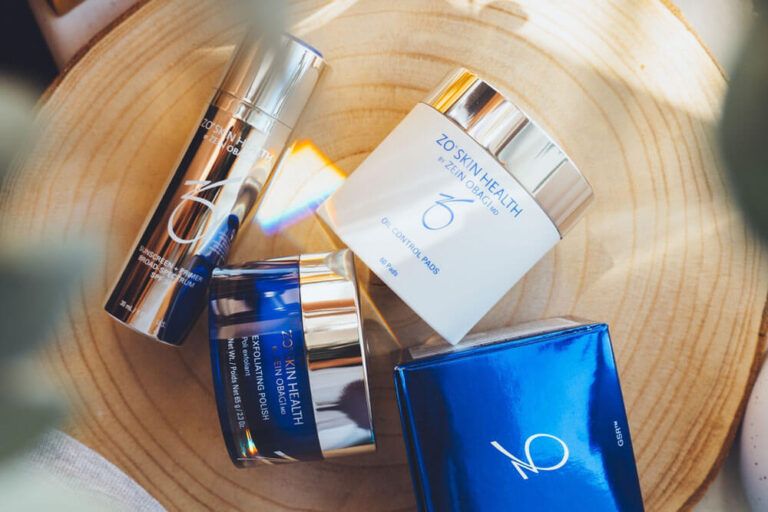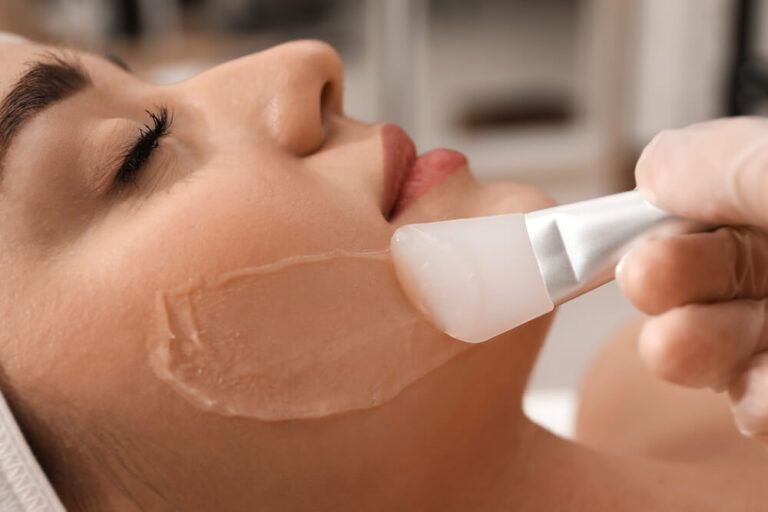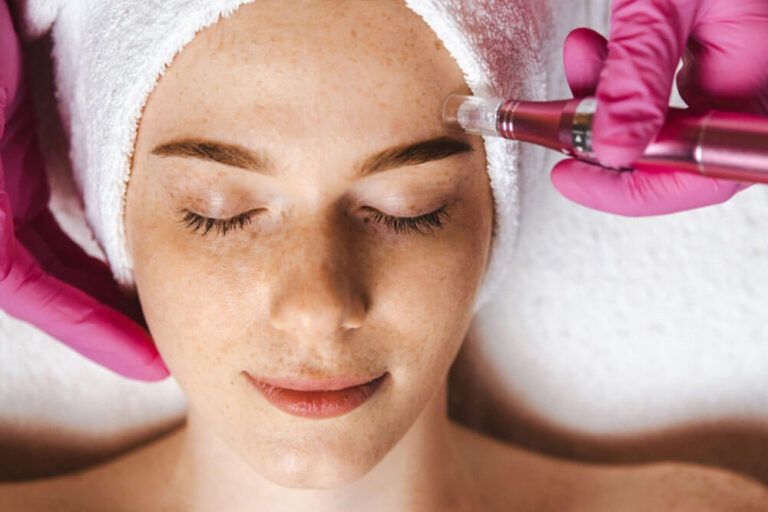Achieving smooth, radiant skin often starts with effective exfoliation, and microdermabrasion is one of the most popular treatments for refreshing your complexion. This non-invasive procedure gently removes dead skin cells, revealing a brighter, more youthful glow. Whether you’re looking to reduce fine lines, minimize pores, or improve skin texture, microdermabrasion offers a safe and effective way to enhance your skin’s natural beauty. But what exactly is microdermabrasion, and how does it benefit your skin? In this guide, we’ll explore how this treatment works, its many advantages, and what you can expect before and after a session.
In This Blog:
- What is Microdermabrasion?
- Key Benefits of Microdermabrasion
- What to Expect During a Microdermabrasion Treatment
- How Often Should You Get Microdermabrasion?
- Post-Treatment Care Tips
- Who Should Avoid Microdermabrasion?
What is Microdermabrasion?
Microdermabrasion is a non-invasive skin resurfacing treatment that gently exfoliates the outer layer of dead skin cells, revealing a smoother, more radiant complexion. This procedure is performed using a specialized device that either sprays fine crystals or uses a diamond-tipped wand to buff away impurities while simultaneously vacuuming away debris. Unlike harsh chemical peels or deep laser treatments, microdermabrasion provides a gentle yet effective exfoliation, making it suitable for most skin types.
There are two main types of microdermabrasion:
- Crystal Microdermabrasion: This technique uses a handheld device that sprays tiny crystals (often aluminum oxide or sodium bicarbonate) onto the skin to exfoliate and remove dead skin cells. A vacuum then sucks up the crystals along with the exfoliated skin, leaving the surface smoother and refreshed.
- Diamond-Tip Microdermabrasion: Instead of crystals, this method uses a diamond-tipped wand to manually exfoliate the skin. The suction device simultaneously removes dead skin cells, providing a more controlled and precise treatment, making it ideal for delicate areas like around the eyes.
Microdermabrasion differs from other exfoliation techniques, such as chemical peels or dermaplaning. While chemical peels use acids to dissolve dead skin cells and dermaplaning removes them with a surgical blade, microdermabrasion physically buffs and vacuums away debris, making it a great option for those seeking immediate results with minimal downtime. Whether you’re looking to brighten your skin tone, reduce fine lines, or improve skin texture, microdermabrasion is a versatile treatment that can be customized to fit your skincare needs.
Key Benefits of Microdermabrasion
Microdermabrasion is more than just an exfoliation treatment—it offers a variety of skin-enhancing benefits that help improve your overall complexion. Whether you’re looking to achieve a brighter glow, reduce fine lines, or improve skin texture, this treatment delivers noticeable results with minimal downtime. Here are some of the key benefits of microdermabrasion:
Deep Exfoliation for Smoother Skin
By removing dead skin cells from the outermost layer, microdermabrasion reveals a fresher, healthier complexion. This process helps eliminate dry, flaky skin, leaving your face feeling incredibly soft and smooth.
Brightens Skin Tone
If your skin looks dull or tired, microdermabrasion can rejuvenate your complexion by promoting cell turnover. This results in a more even skin tone and a natural, healthy glow.
Reduces Fine Lines & Wrinkles
One of the standout benefits of microdermabrasion is its ability to stimulate collagen production, which improves skin elasticity and reduces the appearance of fine lines and wrinkles over time.
Improves Skin Texture
Uneven skin texture caused by acne scars, enlarged pores, or rough patches can be significantly improved. Microdermabrasion helps to smooth the skin’s surface, making it feel softer and more refined.
Minimizes Pores
Clogged and enlarged pores can make your skin look rough and uneven. The exfoliation and suction process of microdermabrasion unclogs pores, helping to reduce their size and prevent breakouts.
Fades Hyperpigmentation & Sun Damage
If you struggle with dark spots, sun damage, or melasma, microdermabrasion can help fade discoloration by removing the outermost layers of pigmented skin, leading to a more even complexion over time.
Reduces Acne Scars & Breakouts
Microdermabrasion can help improve mild acne scars by promoting skin cell renewal. Additionally, by removing excess oil and dead skin cells, it reduces the risk of future breakouts. However, those with active, inflamed acne should consult a skincare professional before undergoing treatment.
Enhances Skincare Absorption
After microdermabrasion, your skin is more receptive to serums, moisturizers, and other skincare treatments. With the dead skin barrier removed, products penetrate deeper into the skin, maximizing their effectiveness.
Whether you’re looking for a quick glow boost or seeking long-term improvements in skin texture and tone, microdermabrasion offers a safe and effective solution. Its versatility makes it a go-to treatment for many skin concerns, leaving you with brighter, healthier, and more youthful-looking skin.
What to Expect During a Microdermabrasion Treatment
If you’re considering microdermabrasion, knowing what to expect during the procedure can help you feel more comfortable and prepared. This non-invasive and pain-free treatment is quick and requires little to no downtime, making it a popular choice for those looking to refresh their skin without major disruptions to their routine.
Cleansing the Skin
- The treatment begins with a thorough cleansing to remove makeup, oil, and impurities. This ensures that the skin is prepped and ready for exfoliation.
Exfoliation Process
- Depending on the type of microdermabrasion, either a fine crystal spray or a diamond-tip wand is used to gently slough off dead skin cells.
- Simultaneously, a vacuum-like suction removes the loosened debris, leaving the skin smoother and more refined.
- The process is gentle and comfortable, with most people describing the sensation as a light scratching or mild vibration on the skin.
Post-Treatment Hydration and Protection
- After exfoliation, a hydrating serum or calming mask may be applied to soothe the skin.
- Since microdermabrasion removes the top layer of dead skin, the skin is more sensitive to sun exposure, so an SPF moisturizer is applied to protect against UV damage.
How Long Does the Treatment Take?
- A standard microdermabrasion session typically lasts 30 to 45 minutes, making it an ideal “lunchtime” treatment.
- If combined with other facial treatments (such as hydrating masks or LED therapy), the session may last up to 60 minutes.
How Will Your Skin Feel After Treatment?
- Immediately after microdermabrasion, your skin may feel slightly tight, tingly, or appear pinkish—similar to a mild sunburn. This is normal and usually fades within a few hours.
- There is little to no downtime, and most people can resume normal activities right away.
- You’ll notice smoother, brighter skin almost immediately, with continued improvements over the following days as new skin cells regenerate.
Is Microdermabrasion Painful?
- Microdermabrasion is not painful; at most, it may feel like a mild scratching or tingling sensation as the exfoliation occurs.
- The suction effect may feel slightly unusual but is not uncomfortable for most people.
By understanding the process, you can go into your microdermabrasion session with confidence, knowing that it’s a quick, gentle, and highly effective way to refresh your skin and achieve a healthy, radiant glow.
How Often Should You Get Microdermabrasion?
The frequency of microdermabrasion treatments depends on your skin type, concerns, and desired results. Since it is a gentle, non-invasive treatment, it can be done regularly to maintain a healthy, glowing complexion. Here’s a general guideline to help determine the best schedule for your skin:
For General Skin Maintenance and Glow
- Once every 4–6 weeks is ideal for those looking to maintain smooth, radiant skin and prevent dullness.
- Regular treatments help promote skin cell turnover and keep your complexion looking fresh.
For Treating Specific Skin Concerns
- Acne scars, hyperpigmentation, or uneven skin tone – A series of treatments every 2–3 weeks for 4–6 sessions can yield significant improvements.
- Fine lines and wrinkles – More frequent treatments (every 2–4 weeks) can help stimulate collagen production for firmer, more youthful skin.
One-Time Treatment for a Special Occasion
- If you want a quick glow boost before an event, you can get one session 1–2 days before for instantly refreshed, brighter skin.
- Keep in mind that some mild redness may occur, so schedule accordingly.
Combining with Other Skincare Treatments
- Microdermabrasion works well in combination with chemical peels, facials, and hydrating treatments for enhanced results.
- Your esthetician or dermatologist can recommend a customized plan based on your skin’s needs.
Regardless of your skincare goals, consistency is key when it comes to microdermabrasion. A regular schedule will help you maintain clear, youthful, and even-toned skin over time.
Post-Treatment Care Tips
Proper aftercare is essential to maximize the benefits of microdermabrasion and protect your newly exfoliated skin. Since the treatment removes the outermost layer of dead skin, your skin will be more sensitive and require extra care. Follow these tips to ensure a smooth recovery and long-lasting results:
Keep Your Skin Hydrated
- Use a gentle, hydrating moisturizer immediately after treatment to soothe and protect the skin.
- Ingredients like hyaluronic acid, ceramides, and aloe vera help maintain moisture and calm any sensitivity.
Avoid Direct Sun Exposure
- Your skin will be more vulnerable to UV damage, so apply a broad-spectrum sunscreen (SPF 30 or higher) daily.
- If possible, wear a hat or seek shade to minimize sun exposure for the first 48 hours.
Skip Harsh Skincare Products
- Avoid using retinoids, exfoliating acids (AHAs/BHAs), and harsh scrubs for at least 3–5 days post-treatment.
- Stick to gentle cleansers and hydrating serums to avoid irritation.
Avoid Excessive Heat and Sweating
- Refrain from hot showers, saunas, and intense workouts for 24–48 hours to prevent excessive redness and irritation.
- Stick to cool or lukewarm water when washing your face.
Don’t Pick or Scratch Your Skin
- While microdermabrasion is non-invasive, some mild flaking or dryness may occur in the days following treatment.
- Avoid picking at your skin to prevent irritation and allow natural healing.
Use a Gentle Cleanser
- Wash your face with a mild, non-foaming cleanser to avoid stripping away essential moisture.
- Avoid using harsh exfoliants or brushes for at least 3–5 days.
When to Resume Regular Skincare Products
- After about 5–7 days, you can gradually reintroduce active ingredients like retinol, vitamin C, and exfoliating acids, as long as your skin is no longer sensitive.
By following these post-care steps, you can prolong the benefits of your microdermabrasion treatment and ensure your skin remains glowing, healthy, and well-nourished.
Who Should Avoid Microdermabrasion?
While microdermabrasion is a safe and effective treatment for most people, it may not be suitable for everyone. Certain skin conditions and medical concerns can make this procedure less ideal or require extra caution. If you have any of the following conditions, consult a dermatologist or skincare professional before undergoing microdermabrasion.
Active Acne or Inflamed Breakouts
- Microdermabrasion can further irritate severe acne, cystic acne, or inflamed pustules, potentially causing more redness, swelling, or even spreading bacteria.
- Alternative treatments like chemical peels or blue light therapy may be better options for acne-prone skin.
Rosacea or Extremely Sensitive Skin
- Individuals with rosacea, eczema, or highly reactive skin may experience excessive irritation, redness, or flare-ups after treatment.
- Gentle exfoliation methods, such as enzyme peels or hydrating facials, might be safer choices.
Open Wounds, Skin Infections, or Cold Sores
- If you have cuts, wounds, sunburn, or active infections, microdermabrasion should be postponed until the skin fully heals.
- Cold sore sufferers should consult a doctor, as microdermabrasion can trigger an outbreak.
Recent Cosmetic Procedures
- If you’ve recently had laser treatments, Botox, fillers, or chemical peels, wait at least two weeks before getting microdermabrasion to avoid unwanted reactions.
Skin Conditions Like Psoriasis or Dermatitis
- If you have chronic skin conditions such as psoriasis or perioral dermatitis, microdermabrasion can worsen dryness and irritation.
- A dermatologist can recommend alternative skincare treatments suited for your condition.
If you’re unsure whether microdermabrasion is right for you, consult a licensed esthetician or dermatologist for a personalized assessment. They can help you determine the best approach for achieving healthy, glowing skin without irritation.
Conclusion
Microdermabrasion is a powerful yet gentle treatment that can exfoliate, brighten, and rejuvenate your skin with little to no downtime. By removing dead skin cells and promoting cell turnover, it helps improve texture, tone, and overall radiance while minimizing fine lines, acne scars, and hyperpigmentation. Whether you’re looking for a quick glow-up or long-term skin health benefits, regular microdermabrasion treatments can help you achieve smoother, younger-looking skin.


